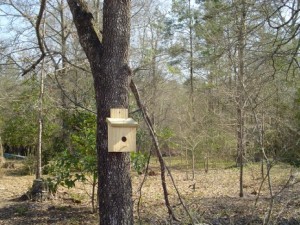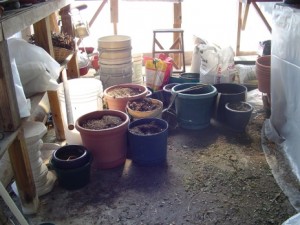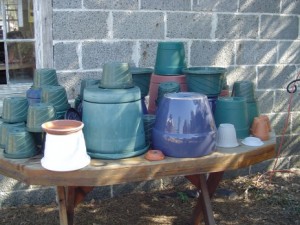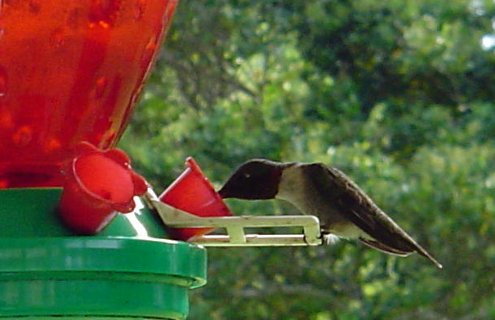
If I was a bluebird, I would want to live here!
We are in the full throes of spring here in the Lowcountry. The beautiful pastel colors are a welcomed sight after the drab winter. Daffodils, tulips, forsythias and fruit tree blossoms dot our countryside. Deciduous trees are popping tiny leaves, and, warmer days beckon us out of out winter shells.
So, we spent the day Saturday doing outdoor

I love my plant house. Major cleanup this year!
things. Brian built two bluebird houses to put on our property.
I spent the day organizing the plant house, cleaning pots, and readying it for a new season.
When I took a break from my tasks, I sat on a bench enjoying the warmth of the sun on my face and the songs of the birds. It was a perfect day. Almost.
Every spring I recall one

I washed about 40 pots on Saturday. I can't wait to fill them up with stuff!
thing that I miss from my childhood that we cannot get in the south. So, I sat on my bench and let my mind drift back to those spring days of my youth, sitting on the porch swing at the stone house, the house I grew up in, catching that subtle wonderful fragrance from the lilac bushes growing nearby.
We can’t grow lilacs here. Many have tried, but our climate is no good for them. It’s not really due to the

I wish we could grow lilacs here.
heat in the summer that they do not grow well here, but, more that they need a long period of winter chill in order to bloom well. We have a substitute for lilacs called the lilac chaste tree. The flowers are somewhat similar, but its blooms are not fragrant, so, it’s not even remotely the same.
I have discovered though, that if I sit very still and close my eyes and go back to that porch swing, I can smell the lilacs. Almost.


